.
French Baroque
George
de la Tour
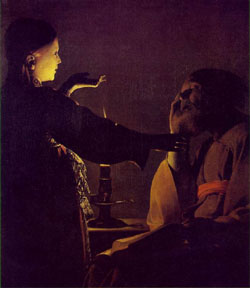
Dream of St. Joseph
|
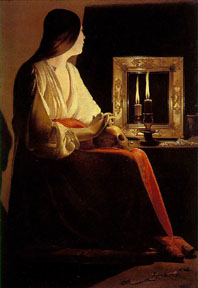
Repentent Magdalen
|
George de la Tour
is my favorite French Baroque painter. He seems to combine the best characteristics
of Italian and Northern art of the period. The above images, for example have
the dramatic lighting effects similar to Caravaggio and his followers, as
well as the somewhat somber religious themes. The Fortune Teller, below,
is more of a genre-scene, similar to a Dutch artist such as Vermeer. The brighter
colors and atmospheric lighting also reminds me of this artist. An interesting
story is told through the imagery. A young man has been lured by a pretty
young woman to see a fortune teller. While he is being distracted, his new
"friend" cuts the chain to his purse, while her companion picks
his pocket.
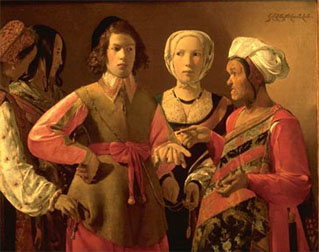
The Fortune Teller
|
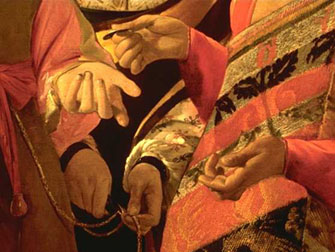
(Detail Reveals the Story)
|
French
Rococo
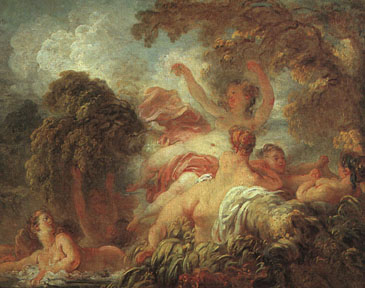
Jean Fragonnard, The
Bathers 1765
|
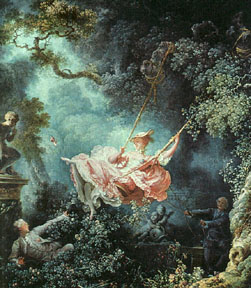
Fragonnard, The Swing,
1766
|
Rococo was the favored
style of French aristocracy and royalty. It is characterized by frivolous
themes, mostly pictures of the upper class enjoying their life of ease and
priviledged status. Though delicate and elegant, it is largely out of favor
these days, as it represents a very unrealistic and superficial view of the
world. King Louis XIV was one of the greatest supporters of this type of painting,
and the architecture of his palace, the Versailles,also follows the Rococo
ideal, which is extremely elaborate, decorative, and even decadent in its
richness.
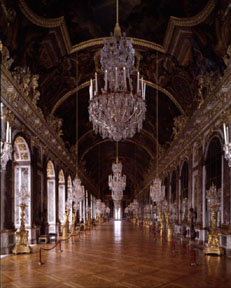
Palace of Versailles, Hall
of Mirrors
|
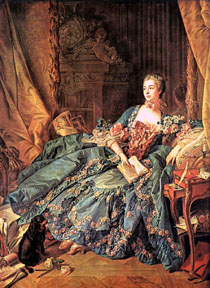
Francois Boucher, Marquise
de Pompadour 1756
|
The Rococo style is
an excellent documentary on the priorities of the royalty and aristocratic
class in France. At this time there was a large underpriveleged class who
were forced to pay high taxes to the King, but were given nothing in return.
This brings about the French Revolution. Along with a debunking of the previous
powers, the new art will also reflect their political and ideological concerns.
The nineteenth century brings about many new styles, and art patronage shifts
from that of the Church and royalty to galleries that sell art to members
of the upper and middle classes. France (especially Paris) becomes the center
of artistic activity, and its influence will be felt all across Europe and
America.
Next: 19th Century
|